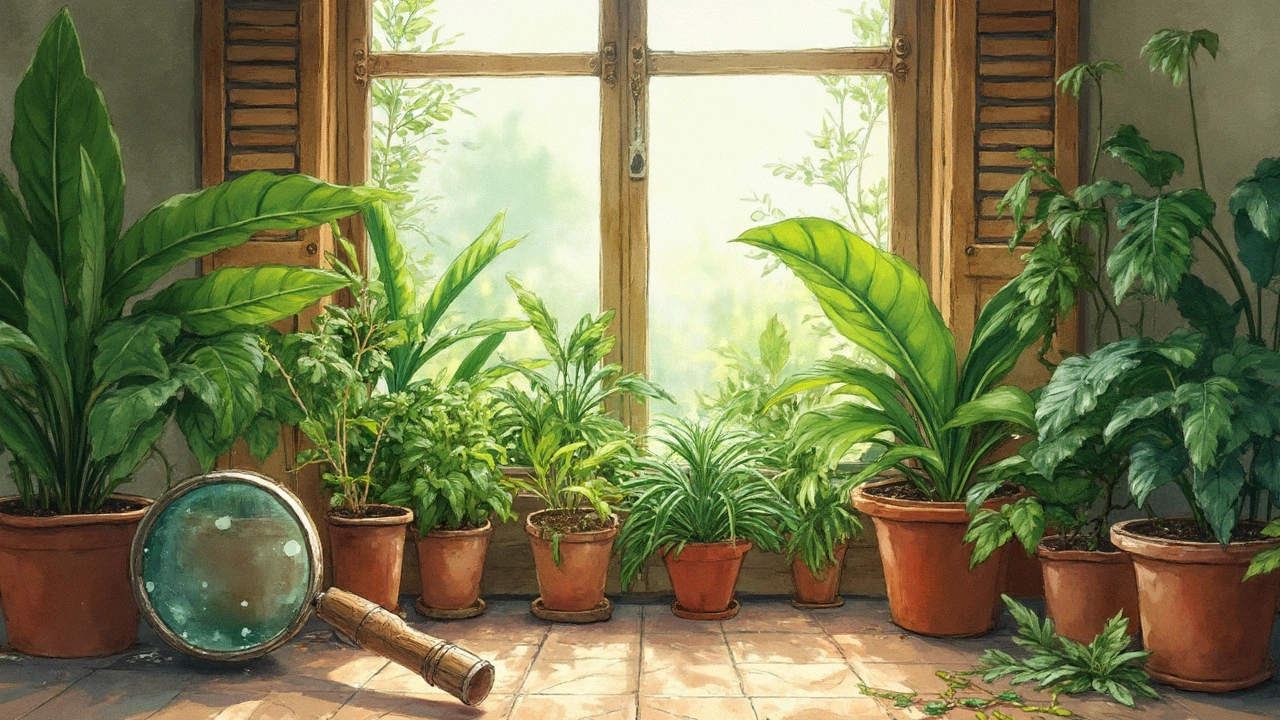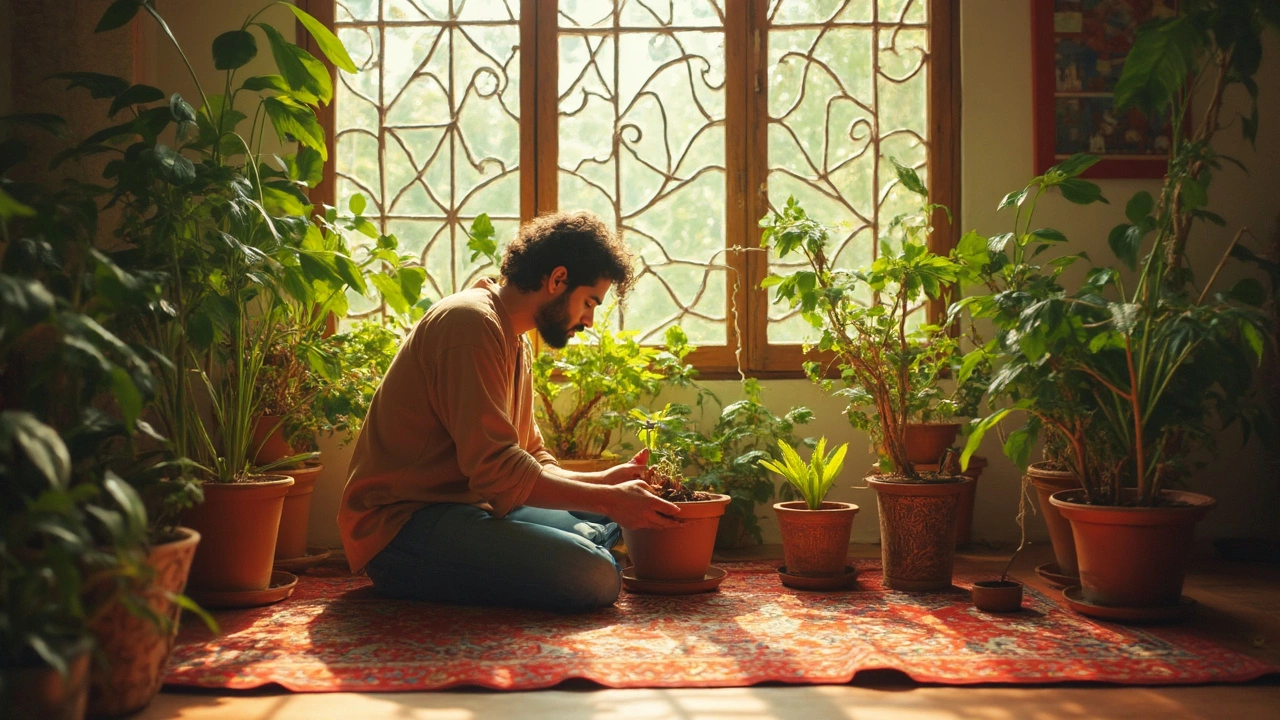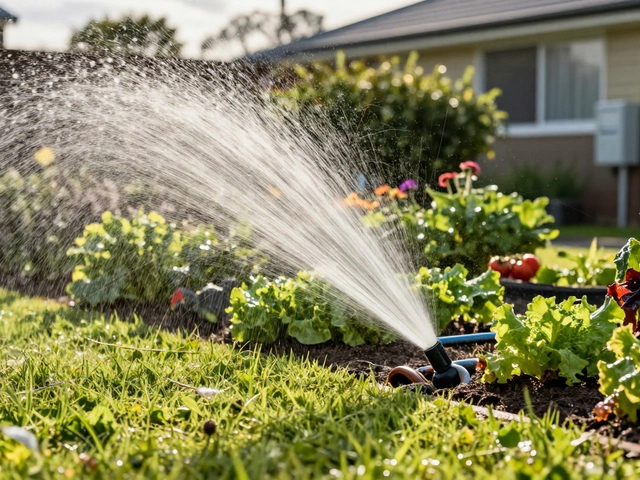Root rot is one of those sneaky plant problems that can really catch you off guard. It's like a silent invader, slowly creeping up on your indoor plants until, boom—you've got a wilted mess on your hands. So, how do you spot it before it's too late?
First off, take a good look at your plant's leaves. If they're turning yellow or wilting, it might be a sign. But wait, those symptoms can pop up for lots of reasons, right? Well, if you also notice the soil staying wet long after you've watered, that's a red flag. Soggy soil can choke the roots, setting the stage for root rot to party.
Curious about what's happening below the surface? Check the roots directly if you can. Healthy roots are firm and white, but if they're brown, mushy, or smell funky, that's definitely not a good sign. Catching these symptoms early can mean the difference between saving your plant or saying goodbye.
- Introduction to Root Rot
- Common Symptoms
- Causes of Root Rot
- Prevention Tips
- Treatment Options
- Signs of Recovery
Introduction to Root Rot
Alright, let's get into the nitty-gritty of what root rot is and why it’s the bogeyman for indoor plants. Root rot is basically a disease that affects a plant's root system. It happens in overly wet conditions that lead to the roots' decay—literally, they start rotting because they can't get the oxygen and nutrients they need to thrive.
Here's the thing: indoor plants are particularly vulnerable to root rot because of the controlled environments they're in. We often keep these plants in pots with poor drainage, which can help water collect and sit longer than it should. Trust me, that's when root rot sees an opportunity and attacks.
How Does It Start?
Typically, root rot begins when the roots of your plants have been sitting in saturated soil for too long. The lack of oxygen becomes a huge issue, and harmful fungi or bacteria move in. These microorganisms are always around, just waiting for the right conditions to multiply. Some of the common culprits responsible for root rot include Pythium, Phytophthora, Rhizoctonia, and Fusarium. Yeah, it sounds like a science class, but understanding these can genuinely help in recognizing the extent of the problem.
Why Worry?
If you're thinking, "So, what if my plant loses a few roots?" Well, the issue is that root rot spreads fast. It doesn’t stop at just a couple of roots and instead continues its relentless march up the root system, eventually compromising the plant's entire health.
Here's a quick look at just how damaging root rot can be:
- Loss of vital nutrients, leading to poor growth or even plant death.
- Inability to recover from the rotted roots, making it tough for the plant to support new growth.
- A permanent invite for pests and other diseases as the plant's weakened state makes it more vulnerable.
Understanding root rot from the get-go can really help you in catching early signs, managing it effectively, and ensuring your plants don't suffer the same fate again.
Common Symptoms
Alright, so you've got suspicion that your plant is dealing with root rot. These symptoms will help you confirm the diagnosis before things get out of hand.
Leaves Looking Off?
If those once vibrant leaves are turning yellow or just hanging there like they're in a permanent sulk, you might have a problem. While this can happen for other reasons, it's a strong early sign if the soil is also soggy.
Wilting Woes
Ever notice how your plant seemed A-okay yesterday, but today it's as droopy as a sad song? Wilting is a frequent symptom as root rot interferes with water uptake. The roots are struggling to do their job, and your plant is paying the price.
Nasty Soil Surprise
Dive into the soil next. You'll often find root rot living in perpetually wet soil. If it doesn't seem to dry out after a watering session, it's like rolling out the red carpet for rot.
Roots That Smell Funky
If you're feeling brave (or desperate), gently dig around the base of the plant and check the roots directly. They should be white and firm. Instead, are they brown, mushy, or do they come with an odor that makes you wrinkle your nose? That's almost certainly root rot and it's a biggie.
Root Rot Stats
Believe it or not, about 50% of all indoor plant deaths are tied back to water issues, a leading cause of root problems. Below is a simple reminder of what to look for:
| Sign | Description |
|---|---|
| Yellow Leaves | Leaves lose color and vitality |
| Wilting | Stems and leaves droop excessively |
| Brown Roots | Mushy texture with an unpleasant smell |
So now you know what to watch out for in your indoor plants. These signs can help you intervene before root rot claims another green victim.
Causes of Root Rot
Root rot sounds scary, right? But it's often the result of a few simple mistakes that most indoor plant owners make. Let's dive into what really gets this problem started.
Overwatering
This is the granddaddy of root rot causes. While our leafy friends need water to thrive, too much of it can drown them. Waterlogged soil is no bueno because it prevents oxygen from reaching the roots. Plants basically suffocate, creating the perfect setting for root rot.
Poor Drainage
Even if you're not pouring on the water like it's going out of style, a pot without proper drainage holes can still trap excess moisture. Imagine water sitting at the bottom of the pot like a swamp—yep, that's where trouble starts brewing.
Soil Type
Believe it or not, the kind of dirt you use matters a lot. Heavy soils that hold onto water are like a VIP pass for root rot. Opt for a well-draining mix instead to keep things light and airy.
Fungal Infections
Root rot isn’t only about moisture; there's also the fungus factor. Once the roots are stressed from too much water, fungi can easily move in and start causing damage. This usually happens in the form of pythium or phytophthora fungi—fancy names for something you definitely don’t want hanging around.
- Root rot tends to hit when temperatures drop, and the soil doesn’t dry out quickly enough.
- Be careful about keeping your plants on cold surfaces, which slows down evaporation.
| Common Causes | Effect |
|---|---|
| Overwatering | Oxygen deficiency |
| Poor Drainage | Excess moisture retention |
| Heavy Soils | Slow drying times |
| Fungal Infections | Root decay |
So, what do you do? Swap that hearty soil for something lighter, add drainage holes if needed, ease up on watering, and ensure you're not letting your plants sit in cold, soggy containers. It's all about balance!

Prevention Tips
Keeping your indoor plants free from root rot doesn't have to be rocket science. A few simple steps can keep your green friends happy and thriving.
1. Water Wisely
Overwatering is a major culprit for root rot. Make sure you're checking the soil moisture before you whip out the watering can. Just stick your finger an inch deep into the soil—if it feels dry, it's watering time. If not, hold off for a bit.
2. Choose the Right Pot
The pot you choose can make a real difference. Grab one with drainage holes to let excess water escape. And when you do water, let it trickle out completely rather than pooling at the bottom.
3. Use Well-Draining Soil
Speaking of escape routes, make sure your soil can let water flow right through. A good mix could include perlite or sand. This helps prevent those soggy roots where root rot loves to take hold.
4. Mind the Humidity
Plants have their climate preferences too. Make sure you’re not overdoing it with high humidity settings, which can encourage moist environments.
5. Keep an Eye on Root Health
Periodically, check that your plant isn't becoming root-bound. Trim back any unhealthy roots and repot as needed to give them plenty of room to breathe.
6. Regular Checks
Consistency is everything. Make it a habit to check your plants regularly for any early signs of trouble. The sooner you catch issues, the better your chances of nipping root rot in the bud.
Treatment Options
Alright, so you've figured out your plant has root rot. What now? The key is to act fast. Root rot can spread quickly, but with some quick fixes, you might turn the situation around.
Step-by-Step Rescue
- Remove the plant from its pot. Be gentle, but firm—you want to avoid damaging any healthy roots.
- Examine the roots and cut away any that look brown or mushy. Use a clean pair of scissors or shears to avoid spreading the rot.
- Allow the roots to dry out a little. Placing them on a paper towel for a few hours should do the trick.
- Repot the plant in fresh, well-draining potting mix. This is crucial, as the old soil is likely harboring the rot.
- Water sparingly but consistently. Make sure the pot has proper drainage.
Understanding Your Soil
The soil you use is crucial in preventing future instances of root rot. Experts at the Royal Horticultural Society suggest, "Choose a potting mix that has good aeration properties. Overwatering is the primary culprit that leads to root rot."
"Choose a potting mix that has good aeration properties. Overwatering is the primary culprit that leads to root rot." - Royal Horticultural Society
Using Fungicides
In some cases, especially if you've caught the rot early, a fungicide can help. Look for one specifically rated for root rot on indoor plants. But remember, fungicides aren't a magic cure—they work best when used alongside the other steps.
| Factor | Solution |
|---|---|
| Poor Drainage | Use pots with drainage holes |
| Overwatering | Water less frequently and monitor soil moisture |
And there you have it—some practical options and tips for dealing with root rot. Take action, and your plant just might make a full recovery.
Signs of Recovery
So, you've caught root rot early and taken action. Now, how do you know if your indoor plants are on the mend? Spotting signs of recovery can feel like a victory dance, but it requires a bit of patience and a watchful eye.
Healthy New Growth
One of the most encouraging signs that your plant is recovering is new growth. Look for fresh green leaves or shoots popping up. If new leaves appear vibrant and healthy, it's a clear indication that your plant is bouncing back from root rot.
Firm and White Roots
If you've taken steps to treat the rot, revisiting the roots is critical. When you see them turning firm and white again instead of remaining brown and mushy, it's a positive development. This means the roots are gaining back their health and functionality.
Sturdy Stems
Check the stems, too. If they become firmer and stand upright without wilting, that's another win. A sturdy stem suggests that the plant is effectively transporting water and nutrients from those healing roots.
Balanced Soil Moisture
Your plant's soil should start behaving, meaning it dries out at a more natural pace between waterings. If you've adjusted your watering habits and notice the soil is no longer soggy, keep it up. This helps the recovery process and keeps indoor plants healthier in the long term.
Monitor and Adjust
Keep monitoring these signs and adjust your care routine as needed. If new issues arise, be ready to step in. Sometimes the journey to full recovery involves ongoing tweaks and attention.
Recognizing these signs of recovery can reassure you that your plant care efforts are paying off. Keep nurturing your green friends and give them a little extra TLC—they'll reward you with their thriving presence.





